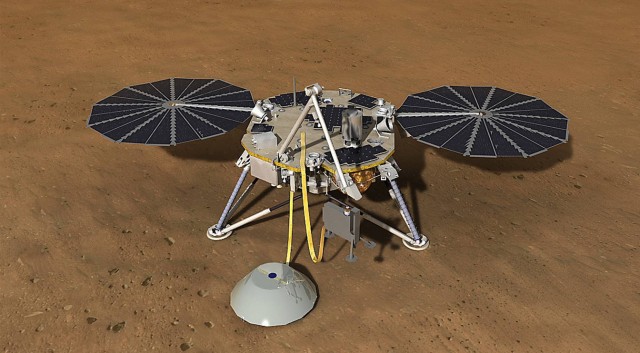Mars mission suspended for now
The leak, initially discovered at the beginning of December, have proven surprisingly stubborn, and now, John M. Grunsfeld, the associate administrator for NASA’s science directorate says, “we just have run out of time”.
NASA’s newest Mars lander won’t launch in 2016.
InSight (Interior Exploration using Seismic Investigations, Geodesy and Heat Transport) is a stationary lander with the goal of analyzing the interior of Mars, which would be only the second planet examined in such a way after Earth.
Although the mission was postponed until 2018, the French press states that the lander would be completely repaired and ready for launch by May of next year. It will take weeks, if not months, before NASA knows how much this delay will cost, and whether it will be able to come up with the funding to move forward with InSight. There’s the Seismic Experiment for Interior Structure (SEIS), Heat Flow and Physical Properties Package (HP3), and Rotation and Interior Structure Experiment (RISE).
A U.S. science satellite slated to launch to Mars in March has been grounded due to a leak in a key research instrument, NASA said on Tuesday, creating uncertainty about the future of a widely anticipated effort to study the interior of the planet. A leak has prevented the instrument from retaining vacuum seal to withstand the harsh environment in Mars.
Though some have suggested the mission and lander might have to be scrapped, scientists on the project don’t believe that will be the case. NASA officials determined there is insufficient time to resolve it. “It’s the first time ever that such a sensitive instrument has been built”.
NASA managers said it could take several months of analysis and discussion before they decide how to proceed. SEIS has presented with a few problems in the past, but they were reported to have been fixed. Apparently, the launch window would have been from March 4 to March 30, 2016. SEIS was built with the participation of the Institut de Physique du Globe de Paris (IPGP) and the Swiss Federal Institute of Technology (ETH), with support from the Swiss Space Office and the European Space Agency PRODEX program; the Max Planck Institute for Solar System Research (MPS), supported by DLR; Imperial College, supported by the United Kingdom Space Agency; and JPL. It will be sent back to Lockheed Martin’s plant in Denver.
Meanwhile, NASA has reported that its Cassini spacecraft finally completed its last close flyby on Saturn’s moon Enceladus, reported USA Today.








